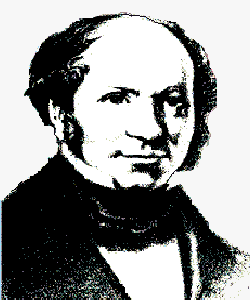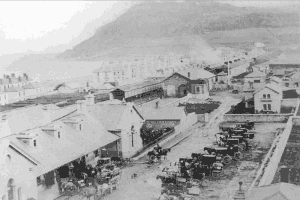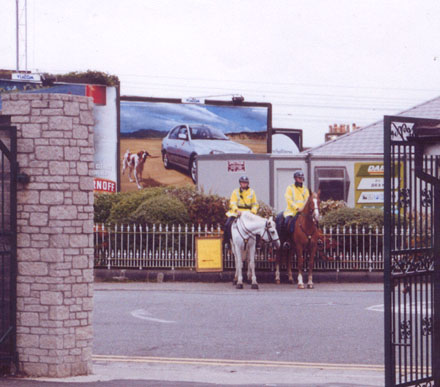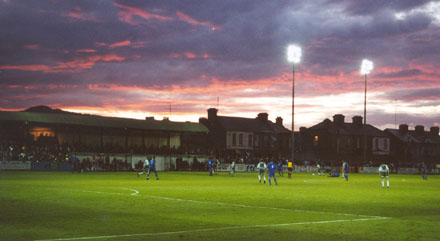The Carlisle Grounds
A Thumbnail History
The Carlisle Grounds can claim to be the FAI League ground with the longest history as a sports venue. Opened in 1862 as the Bray Athletic Ground, it was renamed the Carlisle Cricket and Archery Ground later that year, in honour of the 7th Earl of Carlisle who performed the opening ceremony in his capacity as Lord Lieutenant of Ireland. The name was popularly abbreviated to ‘The Carlisle Grounds’ as early as 1870.
The previous names point to some of the sports it hosted. In addition, there was an indoor roller-skating rink between 1876 and 1880, which was quite an unusual facility. The ground hosted flower shows, croquet and firework displays, often as commercial ventures, but all part of the effort to bring visitors to Bray. Outside, on Seymour road, as well as beside the train station, hackney carriages stood for hire to tour the surrounding countryside.
Which FAI League ground was designed by a leading engineer? The Carlisle Grounds.

William Dargan
William Dargan (1799-1867) designed the Esplanade as well as several buildings in Bray, including the International Hotel, which was opposite the Grounds until it was destroyed by fire in 1974. He was the driving force behind many developments. He financed an industrial exhibition in the grounds of Leinster House, and is a hero to all trainspotters as the main engineer behind Ireland’s rail network. Dargan was a patron of the National Gallery, and for this and other achievements he is commemorated by a statue outside the National Gallery in Kidare street.

Bray Station in the late Nineteenth Century
Many changes have been made to the Grounds in recent years, and there are ambitious plans for the future. The playing surface is excellent and well-maintained. The new (1999) seating on the railway side of the ground is but a part of this work, and in December 2000 planning permission was granted for further development which will see new team and club facilities installed behind and under that stand. Early in 2001, Bray Urban District Council granted a 35-year lease in the Grounds to Bray Wanderers A.F.C., conditional on the use of the grounds being restricted to sporting activities.
But most of the remainder of the venue dates from 1929, and is due to the efforts of the then resident club, Bray Unknowns. They had played a few seasons at the Carlisle Grounds around 1910. The club re-formed after the first World War and joined the League of Ireland in 1924, playing on the outskirts of Bray. In 1929 they moved back to the Carlisle and carried out substantial changes to the ground in preparation for their return. Unknowns built the main perimeter wall at Quinnsboro’ road as well as the terracing and roof over the ‘stand’ (usually called ‘the Shed’). They re-laid the playing pitch and railed it off. It’s an over-used expression, but they must have appeared such a progressive club at that time.
The pitch was subsequently re-laid on several occasions. For example, when Transport brought League of Ireland football back to the ground, many CIE staff from Bray and Dublin volunteered to work on the pitch. It’s said that the excellent pitch drainage derives from the use of railway cinders as a base for the pitch at that time!
The first League of Ireland match at the ground in the 1929/30 season was a 2-2 draw between Unknowns and Dundalk. Fred Rogers opened the scoring for Unknowns, William Murray and John Aitken scored for Dundalk, and Johnny Payne equalised. Unknowns lined out: Dunne, Daly, Ebbs, Kane, Mainey, Fennell, Lally, Hogan, Rogers, Payne, Blackford. The referee was a Mr Nicholson, from Wrexham. A big crowd attended.
In the longer term, financial problems appeared, and the club folded in 1944.
Unknowns had been a springboard for some talented local players (Byrne was an early Republic of Ireland International while playing for Unknowns, and Farrell went on to better things with Shamrock Rovers), and brilliant goalkeepers (including some from across the water, such as Leckie).

Guarding the Carlisle
photo: Michael Tierney
On your next visit to the Carlisle Grounds, you should look for some of the interesting features there. Stand on the terrace behind the goal and you will notice that the pitch and surrounding wall are out of line with the stand on your left. There’s a very simple modern explanation: Bray Wanderers re-laid the pitch a few years ago and made a slight change to the orientation.
At the far corner of the ground, at the Dublin end, there are blocked up turnstiles which are an indication of big crowds when Bray Unknowns played in the League of Ireland. To accommodate some of those spectators, there was a bank, since levelled and now used as a training pitch, behind the goal at that end.
Other features remain intriguing: why does the outer wall skirt around the first World War memorial, for example, and why are there trees inside the ground? Answer: both were in place before Unknowns built the perimeter wall (1929), which in effect extended the ground. The memorial was built in 1919, while the trees once stood on a separate plot then outside the perimeter, similar to trees further up Quinnsboro’ road.

A Red Sky at Night
photo: Michael Tierney
Bray Wanderers re-built and strengthened parts of the wall in 1997-99 as part of the overall plan to improve access to and safety in the ground. They installed new turnstiles on Quinnsboro’ road at the seafront corner and blocked up the old turnstiles along the same wall.
From its history, the quirks and remnants of bygone days, the Carlisle can rank with Dalymount Park and Tolka Park in terms of special character, even if it can’t claim the same prominence in football history.
- Based on an article by, and courtesy of, Frank Martin, Seacrest, Bray
(original article published in the matchday programme, 10th December 1999)
[updated '01]
